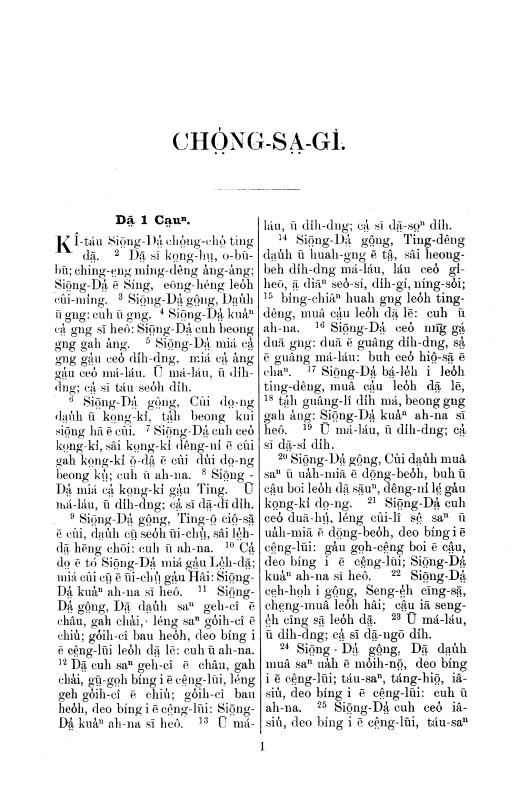Time period 1890 — 1950 | ||
 | ||
Parent systems Pe̍h-ōe-jī, Foochow RomanizedHinghwa Romanized | ||
Hinghwa Romanized, also known as Hing-hua̍ báⁿ-uā-ci̍ (興化平話字) or Báⁿ-uā-ci̍ (平話字), is a Latin alphabet of the Putian dialect of Pu-Xian Chinese. It was invented by William N. Brewster (蒲魯士), an American Methodist pioneer missionary in Hinghwa (modern Putian) in 1890.
Contents
Alphabet
Hinghwa Romanized has 23 letters: a a̤ b c ch d e e̤ g h i k l m n ng o o̤ p s t u ṳ.
Example text
Tai̍-che̤ ū Dō̤, Dō̤ gah Siō̤ng-Da̤̍ dó̤ng-cāi, Dō̤ cuh sī Siō̤ng-Da̤̍. Ca̤̍ Dō̤ ta̍i-che̤ gah Sio̤ng-Da̤̍ dó̤ng-cāi. Māng-beo̍h sī ciā da̤u̍h I cho̤̍ ē; hang pī cho̤̍, beo̍ seo̍h-ā̤uⁿ ng-sī ciā da̤u̍h I cho̤̍ ē.
太初有道,道佮上帝同在,道就是上帝。這道太初佮上帝同在。萬物是借著伊造兮,含被造兮,無一樣呣是借著伊造兮。
In the beginning was the Word, and the Word was with God, and the Word was God. The same was in the beginning with God. All things were made by him; and without him was not any thing made that was made. (John 1:1-3 KJV)
